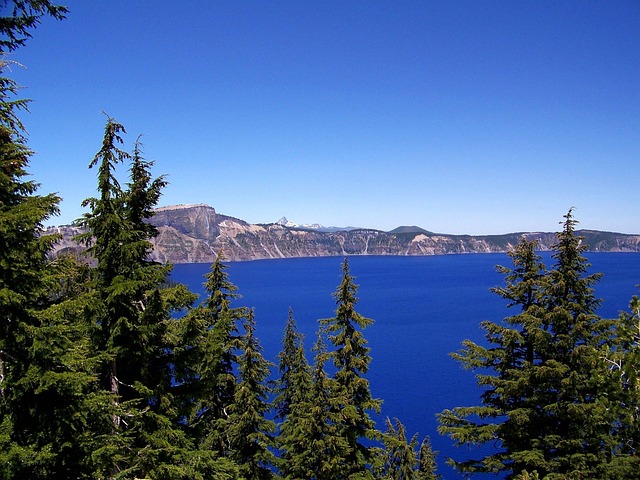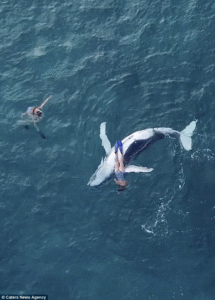Crater Lake National Park in southern Oregon looks like something out of a fantasy movie: a perfectly round bowl of cobalt-blue water, steep volcanic cliffs, and a tiny volcano island sitting right in the middle. But this otherworldly place is very real—and it’s one of the most unique national parks in the United States.
A Sleeping Volcano Turned to Sapphire Lake
Crater Lake fills the collapsed top of an ancient volcano called Mount Mazama. Around 7,700 years ago, Mazama erupted so violently that the top of the mountain caved in, leaving a huge, deep basin called a caldera. Over thousands of years, rain and snow slowly filled that basin, creating the lake we see today. Volcano World+1
There are no rivers flowing into or out of Crater Lake. All of its water comes from precipitation—rain and snow—and leaves only through evaporation and underground seepage. That’s one reason the lake is so clean and clear. Wikipedia+1
The Deepest Lake in the United States
Crater Lake is famous for two things: its depth and its color.
-
Maximum depth: about 1,943–1,949 feet (around 592 m) – the deepest lake in the United States and one of the deepest in the world. Wikipedia+1
-
Water clarity: in some years scientists have measured visibility down to over 40 meters (130+ feet), making it one of the clearest large lakes on Earth. Wikipedia+1
Because the water is so pure and deep, sunlight penetrates and scatters in a way that produces an intense, almost electric blue. In shallow areas near the shore, the water can glow turquoise; in deeper parts, it turns a rich, inky navy.
Islands, Legends, and the “Old Man”
Crater Lake has two small but iconic islands:
-
Wizard Island – a cone-shaped mini-volcano rising from the western side of the lake, covered in trees and ringed by rocky shores. Wikipedia+1
-
Phantom Ship – a jagged rock formation that looks like a tiny ghost ship sailing through the mist. Wikipedia
The lake is also home to the “Old Man of the Lake”—a single, 9-meter log that has been bobbing upright in the water for more than a century. The water is so cold that the wood decays incredibly slowly, letting this strange, floating “guardian” drift around the lake year after year. Wikipedia
For the Klamath people, who have lived in this region for thousands of years, the formation of the lake is tied to powerful stories about sky and underworld spirits, eruptions, and renewal. Those traditional stories echo what science now confirms: this place was shaped by one of the most dramatic volcanic events in North America.

Things to Do at Crater Lake National Park
Even if you know nothing about geology, Crater Lake is an amazing place just to be. Here are some of the most popular ways to enjoy the park:
1. Drive the Rim
Rim Drive circles the lake with multiple scenic pullouts where you can stop, take photos, and just stare at the view—the steep caldera walls, Wizard Island, and endless blue water below. In summer, wildflowers and evergreen forests add bursts of color around the edges. National Park Service+1
2. Hiking and Viewpoints
There are trails for different energy levels, from short strolls to more challenging hikes:
-
Short walks to overlooks along the rim
-
Longer hikes through forests and rocky ridges with panoramic views of the lake and surrounding Cascade Mountains
Even if you never leave the rim, simply watching how the light changes the lake’s colors throughout the day is unforgettable.
3. Lake Access (And Upcoming Changes)
Traditionally, visitors who wanted to get down to water level hiked the Cleetwood Cove Trail, a steep path that leads to the shoreline. From there, people could:
-
Dip their toes (or jump in, if they could handle the icy water!)
-
Take boat tours around the lake or out to Wizard Island
However, the park has announced that Cleetwood Cove Trail will be closed for about two years starting late summer 2025 for major repairs to the trail, docks, and facilities. During that time, swimming and boat tours will pause, and visitors will experience the lake mainly from rim viewpoints instead. SFGATE+1
A Fragile, Changing Wonderland
Because Crater Lake is so isolated and so deep, it’s also very sensitive to change. Scientists have long monitored the lake’s water clarity and chemistry. Recently, they’ve noticed shifts in how well the lake mixes from top to bottom and changes in clarity that may be connected to climate and ecological changes. Wikipedia+1
Protecting this place means:
-
Staying on designated trails to prevent erosion of the fragile volcanic slopes
-
Following park guidelines about waste and wildlife
-
Respecting closures like the Cleetwood Cove project, which are designed to protect the environment and keep visitors safe
Planning Your Visit
Crater Lake National Park sits in southern Oregon’s Cascade Range. The main season is late spring through early fall, but snow can linger on the rim well into summer, and some roads and facilities are seasonal. National Park Service+1
When you visit, bring:
-
Layers (weather at 6,000+ feet can change quickly)
-
Sun protection (the high elevation and bright water reflect a lot of sunlight)
-
Plenty of water and snacks—services are limited compared to more developed parks
Why Crater Lake Stays With You
Many national parks impress you; Crater Lake haunts you. The sheer drop from the rim, the stillness of the blue water, the knowledge that you’re standing on a collapsed volcano—everything about it feels slightly unreal.
Whether you’re a photographer chasing the perfect shot, a geology nerd, or simply someone who loves beautiful places, Crater Lake National Park is one of those rare destinations that looks even more magical in real life than in the photos.
If you’d like, tell me where you’ll post this (blog, Facebook, etc.) and I can shorten or tweak the style for that platform, and also suggest SEO keywords and meta description 😊


